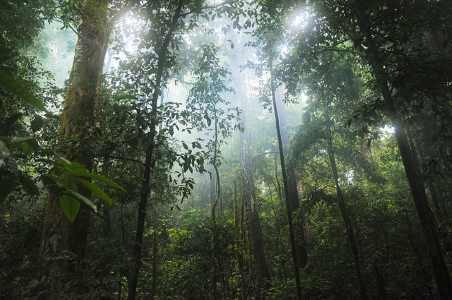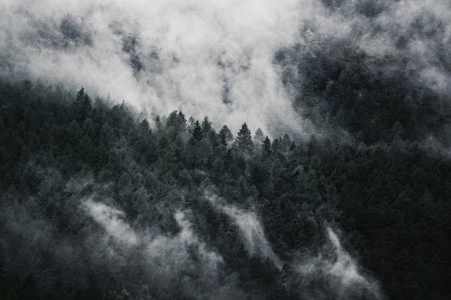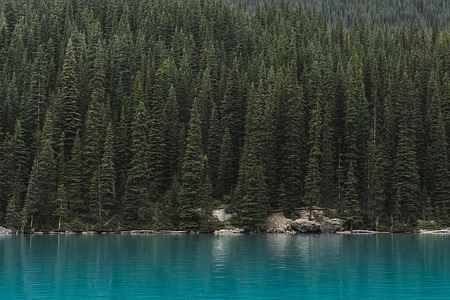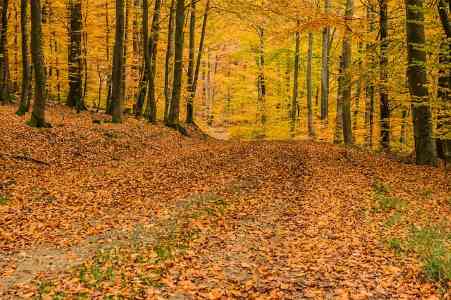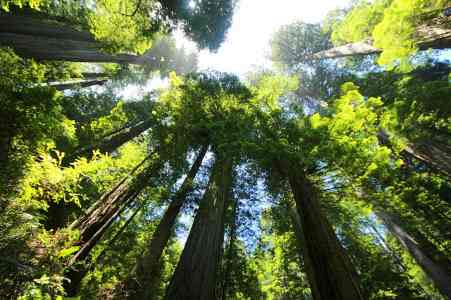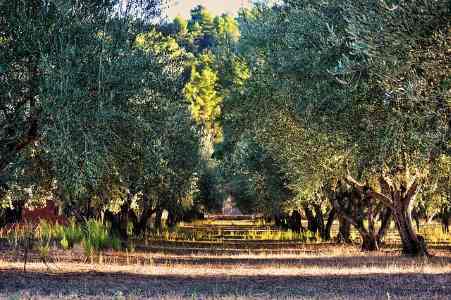Types of Forests (Forest Biome): Temperate, Tropical, Boreal, and More

Tropical, temperate, and boreal forests around the world play an important role in the earth’s ecosystem. Forests are land areas that contain many trees and they have their own ecosystem called a biome. It is estimated that forests cover about 30% of the earth’s total land area. These dense woodlands can include evergreen conifers, broad-leafed deciduous trees, or a mixture of these tree types.
There are 3 main forest biomes:
- Tropical rainforests are found in South America, Central Africa, and Southeast Asia.
- Temperate forests are generally found in North America, Europe, and East Asia.
- The Boreal forest is also called the taiga and stretches across the cold regions of northern Russia, Scandinavia, and Canada.
Within the 3 major forest zones, there are also many subcategories. For example, tropical rainforests can be moist (such as rainforests) or dry (such as in Central America or India). Also, some coastal areas can have temperate tropical forests or mixed broadleaf and evergreen forests.
In this article, you will learn about the many different types of forests. You will find out about the flora, fauna, and types of trees in these important wooded areas.
Types of Forests
The forest biome is one of the most important terrestrial ecosystems on our planet. Apart from storing carbon and providing oxygen, forests are home to thousands of animal and plant species.
Tropical Forests
The tropical forest biome is characterized by the diversity of species, being near the equator, and having a dry and rainy season.
Tropical Rainforest
Tropical rainforests are located near the equator and have a temperature that varies from 20 to 30 °C (68 to 86 °F) during the year,
Countries, where tropical rainforests are found, include Brazil, Peru, the Philippines, Indonesia, Cameroon, and Sri Lanka.
As the name suggests, rain is a common feature of these forest types with around 80” (200 cm) of rainfall annually.
Tropical rainforests are characterized by tall trees growing up to 115 ft. (35 m) that form a dense canopy (overstory). This moist forest climate is also home to a wide range of trees, plants, and many types of animals. In fact, it is estimated that there are over 300 species of deciduous trees in tropical rain forests.
The tropical rainforest biome is important because it provides habitat for a large number of animal species. Rainforests are home to varieties of exotic birds, snakes, reptiles, frogs, monkeys, and large cats.
Subtropical Forests
Subtropical forests are located to the north and south of tropical forests. Some moist broadleaf deciduous forests encompass areas beside tropical rainforests and it can be difficult to tell them apart. It is estimated that tropical and subtropical moist forests contain more species of animal and plant life than any other terrestrial biome.
Subtropical deciduous forests are located in South America, Central America, Central Africa, and Asia. Because of their constantly warm humid climates, these forests are home to many species of evergreen and semi-evergreen deciduous trees. Subtropical forests have to endure rainy seasons and then periods of dry months.
Coniferous forests that contain pines and conifers also grow in subtropical climates. These are found in Central America, Asia, and India.
Dry Tropical Forest (Deciduous)
Tropical dry forests generally have deciduous trees that drop their leaves during the dry season. Unlike broadleaf forests in temperate climates that lose their leaves in winter, it is the lack of rainfall that causes trees in tropical regions to shed their leaves. This allows hardwood tropical trees such as teak and ebony to conserve moisture.
In other countries such as Thailand, Vietnam, Sri Lanka, and Cambodia, tropical dry forests tend to be evergreen. This is because they get enough rainfall during the year to prevent leaf shedding.
The biome of dry tropical forests can be home to animals such as elephants, tigers, rhinoceros, giraffes, and leopards. Similar to tropical rainforests, these forests are also home to a range of tropical birds, large cats, monkeys, and parrots.
Seasonal Tropical Forests
Many countries in the tropical and subtropical regions also have seasonal forests. These forests contain deciduous trees that are mostly semi-evergreen.
Seasonal tropical forests are characterized by wet seasons in the summer and dry seasons in the winter. Many of these areas also get monsoons during the wet season. Seasonal tropical forests can be found near to rainforests and are located along the equator.
Montane (Cloud Forests)
Cloud forests are also called montane rainforests and are a forest biome found in mountainous tropical areas. As their name suggests, these forests are under perpetual cloud cover, giving the forest a damp, eerie appearance.
Montane forests are found in mountainous regions in the tropics. Here clouds usually form at canopy level and the forest environment can be continually misty or foggy. Due to the moist environment and lack of sunshine, cloud forests usually contain a wide variety of ferns and mosses on the forest floor.
One of the features of cloud rainforests is that trees tend to be stockier and crooked rather than tall and straight.
Because of the unique growing environment, there are species of plants that only grow in cloud forests. These can include types of orchids, shrubs, and unique plants such as insect-eating plants.
There are a number of animals that are unique to cloud forest habitats. For example, in cloud rainforests in Central Africa, the mountain gorilla is an endangered species.
Coniferous Tropical Forests
Some of the largest and richest coniferous forests in tropical and subtropical regions are found in Mexico and North America. Other tropical countries that have coniferous forests include the Philippines, India, Pakistan, Nepal, Nicaragua, and Belize.
These forests contain mostly pine trees (Pinus) and conifers that have adapted to warm humid climates.
Similar to other dense tropical forests, the lack of sunlight on the forest floor means that ferns thrive.
This forest biome is also important for many migrating butterflies and birds. Species of animals that inhabit coniferous tropical forests include bobcats, pine martens, wolves, cougars, elephants, and monkeys.
Temperate Forests
The temperate forest biome is characterized by a wide range of tree types, well-defined seasons, and rich fauna. Forests in temperate regions generally get between 30” and 60” (750 – 1,500 mm) of rainfall annually. Temperatures can range between -22°F and 86°F (-30°C to 30°C).
Let’s look in more detail at the subcategories of temperate forests in North America, Europe, and Asia.
Deciduous Forests
Deciduous trees are a type of broadleaved tree that lose their leaves every winter. Deciduous forests are made up of tree species such as oak, maple, elm, beech, birch, and aspen trees.
Deciduous forests are prevalent in countries in North America, Central and Western Europe, and East Asia. There are also small pockets of deciduous forests in South America and Australasia.
The biome of deciduous forests is such that they don’t have a dense canopy. This allows plenty of sunlight to penetrate the foliage and create wide biodiversity in the forest. In fact, there is more biodiversity in the animal and plant kingdom in deciduous temperate forests than in tropical deciduous forests.
Deciduous forests in some countries are home to exotic animals such as leopards, pandas, tigers, and monkeys. In many Western countries, deciduous forest biome includes deer, rabbits, rodents, squirrels, and raccoons. This is not to mention the thousands of insects that inhabit deciduous forests around the world.
Evergreen Coniferous Forests
Pine trees, cedars, fir trees, and redwood trees are some of the conifers that make up evergreen forest biome in temperate climates. Unlike tropical forests or deciduous forests, the coniferous forests are quite simple. They generally consist of foliage high up in the canopy and low growing shrubs or ferns on the forest floor.
Coniferous forests thrive around coastal regions that enjoy mild winters and a lot of rainfall. In inland regions, coniferous forests thrive in drier climates. You will find temperate evergreen forests on the Northwest coast of Northern America, Norway, and throughout the Caucasus.
The coniferous evergreen forests of North America are also home to some of the tallest trees on the plant. Giant redwoods growing up to 367 ft. (112 m) are not uncommon in these temperate forests.
Coniferous forest biome includes animals such as moose, bears, foxes, deer, wolves, and eagles.
Mediterranean Forests
The Mediterranean forest biome generally has hot dry summers and cool winters. These conditions create a unique forest environment where species of hardy trees thrive.
Although classed as a Mediterranean forest biome, this is not just restricted to countries around the Mediterranean. “Mediterranean forests” can be found in coastal regions of Chile, South Africa, California, and Southwestern Australia.
One of the characteristics of trees in Mediterranean woodlands is their small, thick, dark leaves. These are referred to as Sclerophyll vegetation and their waxy leaves help to keep in moisture during hot summers.
The Mediterranean climate is perfect for trees such as olive trees and eucalyptus trees to thrive. However, Mediterranean forests can also include oaks, pine trees, and Nothofagus (southern beech) trees.
Animals in the Mediterranean forest biome include apes, lizards, lynxes, coyotes (in California), leopards (in Northern Africa), and various small mammals.
Temperate Broad-Leaved Rainforests
Rainforests are not just a feature of tropical climates, and many countries in temperate climates also have rainforests.
To be classified as a temperate rainforest, there should be at least 55” (140 cm) of rainfall annually. Also, temperatures should not drop below 39°F (4°C) or rise above 54°F (12°C). Another feature of temperate rainforests is that they have a dense canopy.
Broad-leaved rainforests are found in countries and regions as diverse as New Zealand, Tasmania, Bulgaria, Northwest U.S., Japan, and South America. These forested areas can contain a variety of broadleaved evergreen trees and even some conifers. Also, the dark, mild, and damp conditions mean that a diverse variety of fungi also grow in temperate rainforests.
As with most rainforests, temperate rainforests are evergreen and contain a diverse variety of fauna and flora.
Boreal Forests (Taiga)
Boreal forests grow in cold regions of the world such as Siberia, Northern Canada, Scandinavia, and Alaska. Boreal forest biome is the largest terrestrial one in the world and also the largest forest. This forest is characterized by cold temperatures, evergreen conifers, and a short growing season.
The climate of the boreal or taiga forest is described as subarctic. In some places, temperatures can drop as low as -58°F (-50°C), however, the typical winter temperature is around -4°F (-20°C). During the summer temperatures in the taiga average 64°F (18°C).
Only the cold-hardiest evergreen conifers can survive the freezing temperatures in this unforgiving climate. The most widespread types of trees in the boreal forests are spruce, fir, and pine.
Because the forest canopy is so dense and the soil quality is poor, very little vegetation grows on the forest floor (understory). Also, the short growing season (just 130 days) and lack of sunshine mean that very few plants can survive here. However, many varieties of berries such as cranberries, cloudberries, bilberries, and lingonberries grow in abundance.
The boreal forest biome is a habitat where bears, tigers, wolves, moose, caribou, and rabbits live. Birds of the taiga include eagles, buzzards, grouse, and ravens.
Animals of the Forest Biome
Forests are a unique habitat for many species of animals to live in. Forests provide shelter from the elements, protection from predators, and plenty of food.
Let’s look at some of the common animals that inhabit the forest biome.
Gray wolf
Wolves (Canis lupus) are common predators in boreal and temperate forest biomes. These are the largest of the canine family and they adapt well to surviving in freezing temperatures. Wolves hunt in packs and hunt large mammals that also inhabit forest biomes.
Pine marten
Pine martens (Martes martes) are elusive forest creatures that are related to otters, weasels, and badgers. They inhabit temperate forests and parts of boreal forests in Northern and Central Europe. They live in coniferous and deciduous forests and feed on rodents, birds, insects, and fruits.
Caribou
Also called reindeer in Europe, caribou (Rangifer tarandus) inhabit the taiga regions of Canada, Europe, and Russia. The main diet of caribou is lichens, leaves of willow and birch trees, and various grasses.
Macaws
Macaws are a type of long-tailed parrot in the family Psittacidae. These exotic birds make for noisy pet birds and are native to tropical rainforests. Macaws feed on a variety of seeds, nuts, leaves, and other plant material. Interestingly, macaws that inhabit the western Amazon rainforest eat clay which is a habit not observed in other types of these birds.
Gorillas
Mountain gorillas (Gorilla beringei beringei) are native to the cloud forests of a small area in central Africa. There are thought to be only 800 of these large primates in the wild. Loss of forest habitat, poaching, and civil unrest are the main reasons for dwindling populations of these large forest mammals.
Brown bear
Brown bears (Ursus arctos) are found in the boreal forests and temperate forests of North America and some parts of Eurasia. Also called grizzly gears, these inquisitive animals will try and eat just about anything they come across. Brown bears can be dangerous for humans if they associate humans with food sources or want to protect their young.
Jaguar
Jaguars (Panthera onca) are a large type of cat that are native to the biome of many types of forests. Jaguars live in rainforests and cloud forests and they use the dense foliage for camouflage. These elegant large felines are also known to inhabit dry forests in tropical and subtropical regions in the Americas.
Reptiles, amphibians, and insects
Forest biome includes thousands of species of reptiles, amphibians, and insects. Some of the most exotic reptiles and amphibians are found in rainforests. These can include colorful toads, frogs, and newts, as well as, tortoises, snakes, lizards, and crocodiles.
Related articles:

